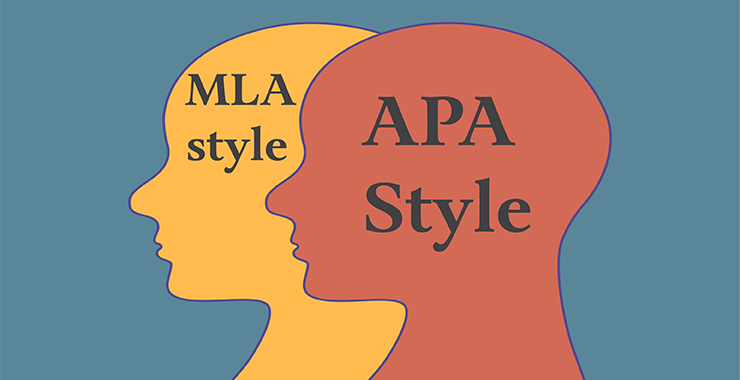

The short answer is that writing styles were developed within specific domains. MLA style, which comes from the Modern Language Association, is used in the humanities in subjects such as English and other modern languages. APA Style, which comes from the American Psychological Association, is used in the behavioral sciences in subjects such as psychology, education, and nursing, and even in subjects like business and engineering.
Scholars and students in these fields have different needs that are reflected in their writing styles. This post explores key similarities and differences between APA Style and MLA style and provides resources for writers learning APA Style.
APA Style and MLA style share a lot in common with not only each other but also other writing styles such as Chicago style and American Medical Association (AMA) style. Indeed, most writing styles address areas such as these:
Thus, once you have learned one writing style, learning another writing style is relatively straightforward. Although the exact details may differ, the overarching considerations are similar. This makes it easier to mentally organize your understanding of what it means to follow a writing style.
Simply put, APA Style is designed for writing and understanding scientific literature about people. Here are some of the ways the needs of the behavioral science community of scholars show in the style:
APA Style provides specific directions on what information to include in certain kinds of papers. Specifically, if you are conducting and reporting the results of experiments, you should follow APA’s journal article reporting standards, or APA Style JARS. JARS ensure that all researchers consistently report the same kinds of information, which allows readers to evaluate the work as well as to make comparisons between works, such as in a meta-analysis.
If you are a student writing a simpler APA Style paper, for example, a reaction or response paper, annotated bibliography, or literature review, we recommend first focusing on fulfilling the assignment requirements set by your instructor.
To learn how JARS can be relevant to you, check out this blog post about APA Style JARS for high school students.
APA provides detailed, science-backed guidelines on how to describe people with dignity and respect in the form of the bias-free language guidelines and the Inclusive Language Guide (2nd ed.). The guidelines cover topics including age, disability, gender, race and ethnicity, sexual orientation, and socioeconomic status.
When writing in APA Style, paraphrase rather than quote in most cases. Whereas in literature it is often important to respond to the exact wording an author used, in science you should primarily respond to the ideas, which means restating them in your own words.
For help on learning to paraphrase, including how to cite a long paraphrase, check out our page on paraphrasing.
In-text citations of paraphrased material in APA Style consist of the author and year, whereas in MLA style they consist of the author and page number. Page numbers (or other location information for works without page numbers) are required in APA Style citations only for direct quotations.
If you are paraphrasing in APA Style, it is optional to include a page number (although read your assignment guidelines, because your instructor may request page numbers regardless).
APA Style in-text citations include the year, whereas MLA citations do not. Each style suits its discipline. Whereas literature is evergreen, science progresses. Older science may be out of date and thus not of use to readers, so having a year in the citation allows readers to quickly understand how old the source is.
Although APA Style does not have formal requirements for how old (or rather, young) your sources have to be, instructors may require you use only sources published within the last 5–10 years or similar, so check your assignment guidelines carefully. And regardless of any requirements, try to use the most current information possible because this is best for advancing the scholarship in your field.
References in APA and MLA styles usually include information about the author, date, title, and source of a work, which allows readers to identify and locate the work. However, the information is presented in a different order and with different capitalization and punctuation depending on the style.
For a step-by-step guide to the different formats for common sources such as journal articles, books, edited book chapters, and webpages, check out the APA Style and MLA Style Reference Comparison Guide (PDF, 104KB) .
If you’re at the beginning of your APA Style journey, fear not. This website has a wealth of free and authoritative resources designed to help you. We recommend that you check out our APA Style for Beginners landing page, which curates resources appropriate for an audience new to APA Style.
We are also happy to hear your feedback, so if you have ideas or suggestions on this topic, please leave a comment below.
Comments are disabled due to your privacy settings. To re-enable, please adjust your cookie preferences.